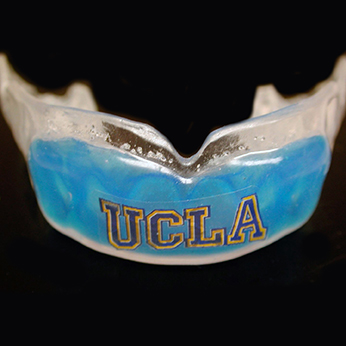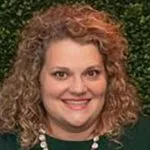Meet mouthguard expert Dr. Ray Padilla, the official dentist for UCLA’s athletic teams— and a modest little basketball franchise known as the Los Angeles Lakers.
PATIENTS AT DR. RAY PADILLA’S dental practice in Manhattan Beach, California, certainly recognize that the treatment they receive is excellent. What they might not know: It’s the same standard of care the good doctor gives to Olympians, top college athletes and NBA stars as well.
Dr. Padilla, you see, is also the team dentist for the UCLA Bruins and the Los Angeles Lakers—the pinnacle, perhaps, of a career that began when he was a dental student at the University of Southern California many years ago. (Or earlier: “I’ve known since I was 5 years old that I wanted to be a dentist,” he says. “I have no idea why.”)
His journey into the oral cavity of top-tier athletes kicked off in 1984, when Los Angeles hosted the Summer Olympics. (It hosted the Summer Games in 1932 and will do so again in 2028 as well.) An avid sports fan, Dr. Padilla, then a young dentist, planned to attend the Olympics as a spectator. However, his USC roommate, an Arizonan named Dr. Rick Lawson, was one of two organizers of the dental polyclinic at the L.A. Games.
“I had no idea that sports dentistry existed,” Dr. Padilla says.
He had to be talked into helping out, but over six weeks, he and a crew of dentists sometimes treated more than 100 athletes a day, doing their part to help the ’84 Summer Olympics become a resounding success. “From that point forward,” he says, “I just fell in love with sports dentistry.”
 His first such position was as the team dentist for Bishop Amat Memorial High School in L.A., where he spent 17 years. In 1996, he assumed the same position for both UCLA Athletics and the Los Angeles Galaxy, the city’s Major League Soccer franchise; he has been the Lakers’ tooth doc since 2016. (He held the same title for the L.A. Avengers Arena Football team from 2004 to 2009.)
His first such position was as the team dentist for Bishop Amat Memorial High School in L.A., where he spent 17 years. In 1996, he assumed the same position for both UCLA Athletics and the Los Angeles Galaxy, the city’s Major League Soccer franchise; he has been the Lakers’ tooth doc since 2016. (He held the same title for the L.A. Avengers Arena Football team from 2004 to 2009.)
His passion for sports and oral health also led him to design a better mouthguard for high-level athletes, using pressure-thermoforming techniques he learned after spending a week in 1995 in the lab of prominent Australian dentist Dr. Brett Dorney. “A lot of mouthguards are not up to par, and I’m being kind when I say that,” Dr. Padilla observes. The result: too many preventable injuries. (Dr. Padilla himself sustained a luxation injury while playing basketball in college without a mouthguard.) His supremely comfortable, tailored guards (left) get the job done: “I’ve never had an injury with any player wearing a pressure-thermoformed mouthguard, and I’ve made 400 to 500 a year for the past 25 years.”
Proximity to famous athletes and famous-athletes-to-be, meanwhile, leaves him nonplussed. “I didn’t start out with pro teams,” he says. “Just like any other profession, you need to put your time in, and you don’t do it for the glory. You do it because you want to help people, and you want to do it the correct way.”




